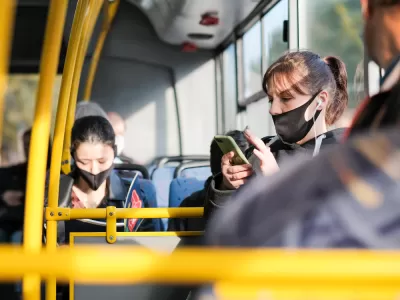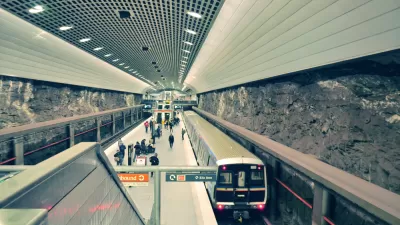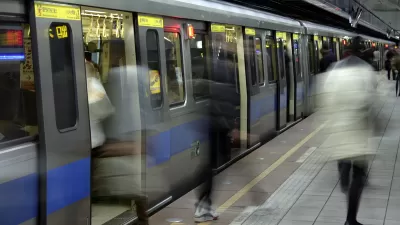While COVID-19 is a unique moment in American history, experiences from past pandemics shed light on how the pandemic might shape public transit ridership.

'What does history suggest will happen to transit ridership in America after COVID-19?' asks an article by Jake Blumgart, noting that "It’s impossible to know when, or if, ridership will ever fully recover because there’s no comparable analog to this moment in America’s modern history."
The unique challenges of our era don't compare to the 1918 flu pandemic, when remote work was essentially non-existent and people needed to leave their homes to complete daily tasks. At the same time, governments did not provide economic support, making staying at home and social distancing out of the question, and most Americans did not yet own automobiles. At that time, most transit users had no choice but to continue riding. Today, remote work and widespread car ownership allow more riders to choose a different option, despite the steps taken by transit agencies to reduce the chance of transmission on trains and buses.
As Blumgart writes, the 2003 SARS epidemic presents a more apt comparison. "A 2014 study by Kuo-Ying Wang found that for every new SARS case reported by the media, 1,200 subway users were lost. If anything remotely close to that holds, transit systems in the U.S. will have a long, long path to recovery." Facing continuing uncertainty, American transit agencies are debating a variety of options for adjusting service to better serve post-COVID travel patterns.
FULL STORY: What Does History Teach Us About Pandemics and Transit Ridership?

Alabama: Trump Terminates Settlements for Black Communities Harmed By Raw Sewage
Trump deemed the landmark civil rights agreement “illegal DEI and environmental justice policy.”

Planetizen Federal Action Tracker
A weekly monitor of how Trump’s orders and actions are impacting planners and planning in America.

The 120 Year Old Tiny Home Villages That Sheltered San Francisco’s Earthquake Refugees
More than a century ago, San Francisco mobilized to house thousands of residents displaced by the 1906 earthquake. Could their strategy offer a model for the present?

Ken Jennings Launches Transit Web Series
The Jeopardy champ wants you to ride public transit.

BLM To Rescind Public Lands Rule
The change will downgrade conservation, once again putting federal land at risk for mining and other extractive uses.

Indy Neighborhood Group Builds Temporary Multi-Use Path
Community members, aided in part by funding from the city, repurposed a vehicle lane to create a protected bike and pedestrian path for the summer season.
Urban Design for Planners 1: Software Tools
This six-course series explores essential urban design concepts using open source software and equips planners with the tools they need to participate fully in the urban design process.
Planning for Universal Design
Learn the tools for implementing Universal Design in planning regulations.
Clanton & Associates, Inc.
Jessamine County Fiscal Court
Institute for Housing and Urban Development Studies (IHS)
City of Grandview
Harvard GSD Executive Education
Toledo-Lucas County Plan Commissions
Salt Lake City
NYU Wagner Graduate School of Public Service





























